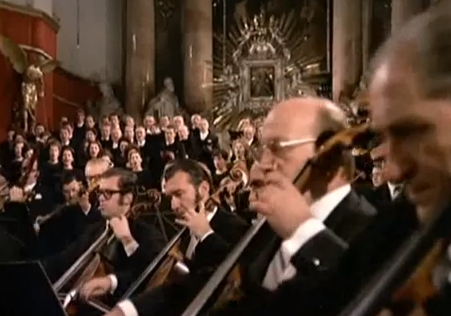I’ve been thinking about how differently people see the world and how that influences their view of events. Something that rolls off one person’s back can cause another to spend a week sobbing in bed, barely able to contain their grief or embarrassment. What is a minor setback to one person can be a career-ending defeat for someone else. It’s such a powerful thing, this difference in how we interpret, visualize, and extrapolate events.
[mainbodyad]To demonstrate, one of the best tools available is classical music. In the classical tradition, the requiem was performed during a funeral for the dead. One of the first passages is the Dies Irae. It alludes to the Biblical scriptures of when the end times have arrived. The Earth is burning away into ashes as God the Father arises from the throne, his son descending to Earth for the final judgement. The heavenly trumpets scream across the sky that creation is complete and all men must now give an account of their life. (Later, as the requiem progresses, the Book of Life is brought before Him, and all hidden things are revealed. And when man is left without defense, it is Christ who steps into the gap to plead for their case, shielding the sons of Adam and daughters of Eve under the mercy of his blood.)
The text is largely the same, century after century, yet different composers visualized this event in dramatically different ways. You can see a bit of their personality in the music; their hopes, dreams, and fears. Test it for yourself. Think about the words that are being said, and then try to picture the scene unfolding as if you were there to witness the final days of humanity as we know it.
Verdi saw it like this … you can almost visualize a terrifying scene unfolding as the scorched skies part and God descends, the wicked fleeing before Him …
Mozart saw it like this… while there is fear, there is also an excitement; a hope that the creator has finally returned and justice will be done …
Berlioz saw it like this … a triumphant return worthy of fanfare and joy. You can practically picture white stallions and banners unfurling in the wind …
Many centuries before that, people in the Church saw it like this …
Modern composer Karl Jenkins sees it like this … one would almost be tempted to picture God as a badass in a perfectly tailored Armani suit checking something He needs to do off his list.
Ligeti seemed to imagine screaming and chaos followed by periods of silence and cries …
Brahms didn’t use the traditional text, but instead the German Lutheran Bible. As a result, his words are different but it is the same spirit. Brahms reminds his fellow man, “For all flesh is as grass, and the glory of man like flowers. The grass withers and the flower falls.” The build up after the first realization as death itself approaches as the war drums come in toward the 12:27 section is one of my favorite things in the world; they start screaming, louder and louder until the chorus bursts in with the reminder that man will fade like all things. The second movement we are discussing begins at exactly 10:00 …
Though the themes are the same, every man has a different song in his heart. Some vary a little, others wildly. Even when provided the same basic parameters, the outcomes can be different based on the people involved, or even the time of day (you might get varying answers when a person hasn’t had their morning cup of coffee or is ecstatic over news that their grandchild was just born). Why? The person is shaped by their past triumphs or failures, their culturally indoctrinated expectations, their value systems, their family life, whether or not they are in love or have anything to strive toward or lose, whether they follow a revealed or rational knowledge worldview, how much they value safety over truth, and an endless list of other factors, some environmental others genetic, that combine to create the character and condition of a person at a particular moment.
[mainbodyad]When you understand that this is a fundamental component of humanity, it begins to illuminate intelligent ways to think about approaching other fields such as sociology, economics, political science, and even the way the education system is setup. Namely, outside of a few specific scenarios, the best, most sustainable systems are generally those with built-in flexibility to accommodate individuality and changing fashions. It’s one of the reasons free markets consistently produce higher standards of living and happiness – people need to be allowed to make personal choices for their own life based on relevant factors that matter to them. They need to be able to “paint” their life however they want in most cases, from clothing to music, food to friends, surrounding themselves with the type of environment that fits them, like attracting like.
In command economies or centralized governments, misery is much higher because humans cannot be shoved into a one-size-fits-all model; forced to sing the same song or pen the same requiem. While one person may be miserable living in a small one-room apartment, another may find it cozy and be physically uncomfortable in a large estate. While one may want blue jeans and rock ‘n roll, another may desire French cuffs and the opera. There are many people who long for the days of the 1980’s gritty New York scene in major cities, whereas I’d much rather live in a world of perfectly tamed, rationally planned Japanese tea gardens because I appreciate the discipline, reflection, and love required to maintain it. Free societies and free economies have superior results over long periods of time because they can deal with these conflicting desires and individual temperaments in a way rigid systems can’t, like oak trees bending to the wind.



